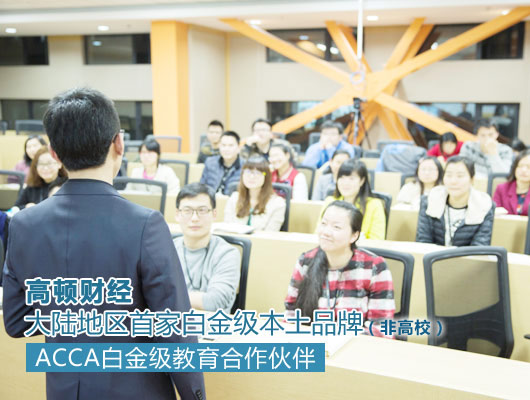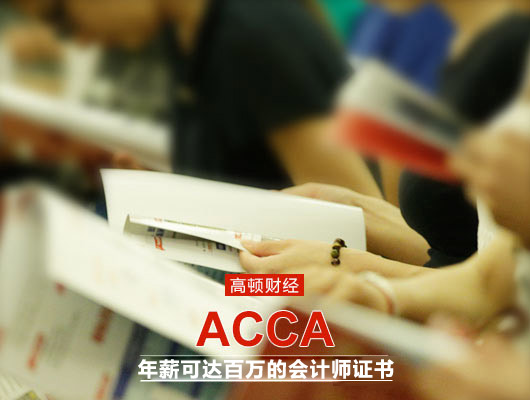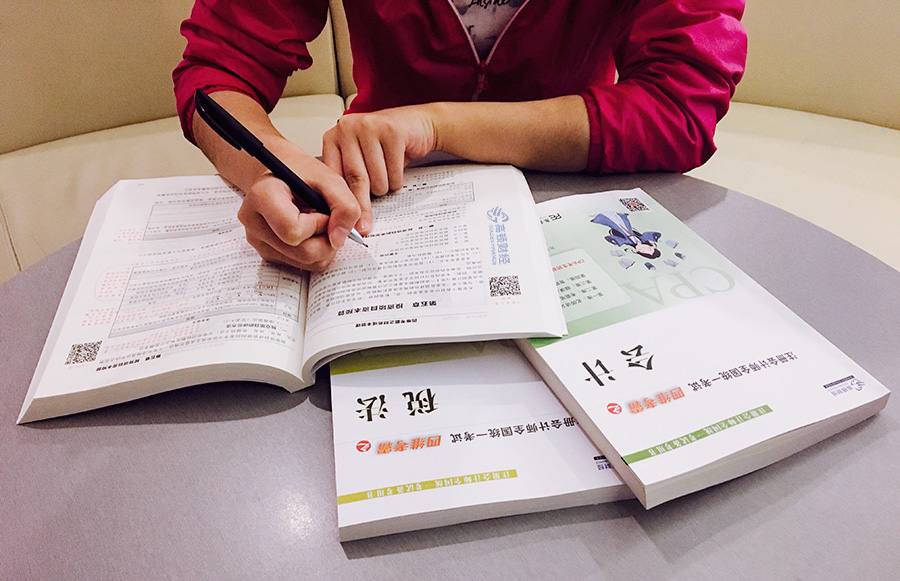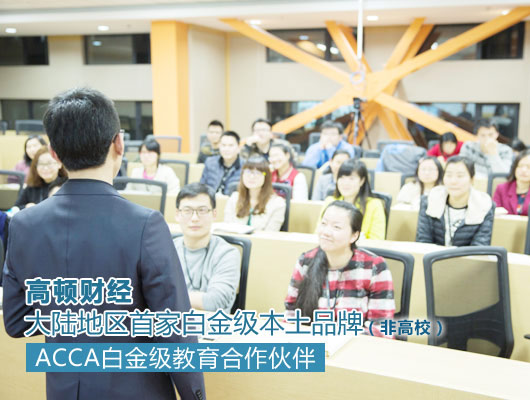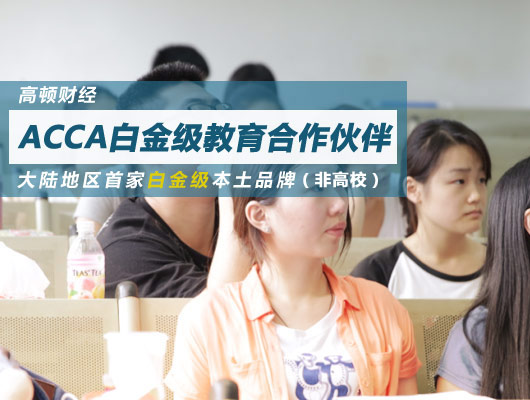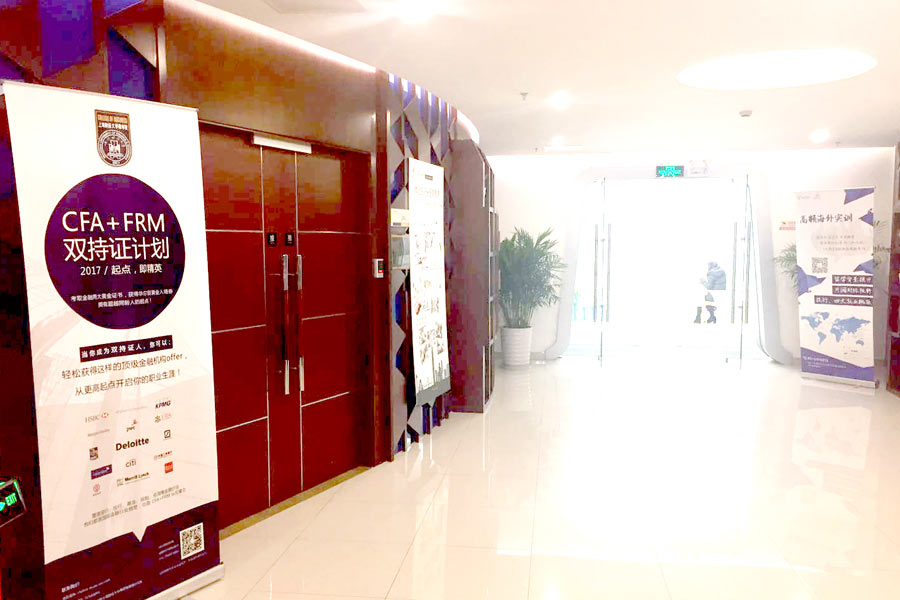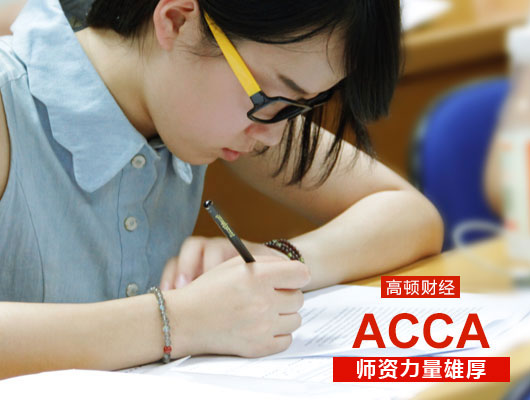ACCA F6最全公式总结,随着2017年ACCA F6考纲的变化,下面为ACCA考生整理总结最新最全的F6考试公式。
ACCA F6最全公式总结,随着2017年ACCA F6考纲的变化,下面为ACCA考生整理总结最新最全的F6考试公式。 Income Tax Liability 1.Adjusted net income=net income-gross PPS-gross gift aid donation
2.Personal allowance Std PA=£11,000 When'Adjusted net income'≥£100,000 Std PA 11000 Less:restriction(adjusted net income-100000)*1/2 Adjusted PA 'Adjusted net income'≥£122000,PA=0
3.Gift aid donation •Gross up=net gift aid donation*100/80 •Extending the rate band 32000(150000)+gross gift aid donation •Adjusted net income=net income-gross gift aid donation
4.Child benefit income tax charge: When£60,000≥'Adjusted net income'≥£50,000 %=(Adjusted net income-50000)/100 Round down child benefit income tax charge=%*child benefit received
5.Authorized mileage allowances Up to 10,000 miles 45p over 10,000 miles 25p
6.Additional charge of living accommodation benefit Additional benefit=(cost of providing accommodation–£75,000)×the official rate of interest which is time apportionment
7.Benefit of use of assets The benefit assessed is the higher of -20%x(MV when first provided–the price paid by employee) -rental paid by employer(if asset is rented) which is time apportionment
8.Benefit of gift of assets If new asset is given:cost of the asset If used assets is given:higher of -(MV when given–the price paid by employee) -(MV when first provided–benefits already assessed–the price paid by employee)
9.Benefit of provision of a car Taxable car benefit=X%*(list price–capital contribution)*time proportion–payment by employee for use of the car Emission≤50 g/km,X=7% 51≤Emission≤75 g/km,X=11% 76≤Emission≤94g/km,X=15% Emission=95g/km,X=16% Emission>95g/km,increase by 1%for every 5 g/km increase X=(Emission-95)/5 Round down diesel cars:+3% Maximum:37%
10.Benefit of Provision of fuel X%*£22,200 which is timeapportionment
11.Provision of vans Standard benefit of£3,170 £598 a year for private fuelwhich is time apportionment
12.PPS Grossup=net PPS*100/80 Extending the rate band 32000(150000)+gross PPS Adjusted net income=Netincome-gross PPS 13.OPS Employer’scontributions:trading profit-OPS Employee’scontributions:employment income-OPS
14.Furniture replacement relief Furniturereplacement relief=MV of new furniture(same function)-resale value of oldfurniture
15.Rent a room Gross rental income<=£7500,lower of -Property business income=0 -Property business income=normal calculation=gross rent–expenses–Furniture replacement relief Gross rental income>£7500,lower of -Property business income=normal calculation or, -Property business income=alternative calculation=gross rent-7500
16.Premium Landlord: Premium is treated asproperty business income for the year of grant. P-P×2%(n-1) Where:P=total premium n=duration of lease in years Tenant:premium paid is treated as a tradingexpense(proportioned to month) P-P×2%(n-1)*m n 12
17.Class 1 NIC(on cashearnings) Primary: £1-£8,060per year Nil £8,061-£43,000per year 12% £43,001 and above per year 2% Secondary: £1-£8,112per year Nil £8,113and above per year 13.8%
18.Class 1A NIC(on taxablebenefits) =taxablebenefits*13.8%
19.Class 2 =£2.8*weeks
20.Class 4(on trading profit:which is after loss relief) £1-£8,060per year Nil £8,061-£43,000per year 9% £43,001 and above per year 2%
21.Payment of tax for 16/17: -31.1.17-first payment onaccount=1/2*(15/16 income tax payable+15/16 NIC Class 4) -31.7.17-second payment onaccount=1/2*(15/16 income tax payable+15/16 NIC Class 4) -31.1.18-final balancing payment=16/17 income tax payable+16/17 NIC Class 4 tax-(15/16income tax payable+15/16 NIC Class 4)+16/17CGT+16/17 Class 2 Payment ofcapital gain tax:31.1.18for 16/17 Payment ofClass 2:31.1.18for 16/17
22.Interest on late payment of tax:3%*due amount(which is time apportionment) POAs-runs from 31.1.2017/31.7.2017 Final payment-runs from 31.1.2018
23.Penaltyon late balancing payment: -no more than 1 month,0 -no more than 6 month,5%,(5%*(shouldpay-actual pay)) -more than 6 months,10 -more than 12 months,15%
24.Penaltiesfor late return: -thereturn filed after the filing date,100 -morethan 3 months,10 per day,at most 90 days -morethan 6 months,higher of 5%*tax due on return&300 -morethan 12 months,higher of 100%/70%/5%*tax due on return&300 CGT
1.Transfers between spouses/civil partner(A→B) A: less:cost deemed proceeds: less:rollover relief Gain taxed now(0) B: base cost=deemed proceeds-rollover relief
2.Partial disposal Proceeds A Less:selling costs(X) X Less: original cost*A/(A+B)(C) Chargable gain X A–MV of the part disposed of B–MV of the remaining part of the asset
3.Damaged asset A A+B A=compensation received B=unrestored value of asset
4.Destroyed assets Compensation received Less:cost Less:rollover relief Gain taxed now(not reinvest) Base cost of the new asset=MV of the new asset-rollover relief
5.Non wasting chattels(antiques and paintings)
6.Wasting assets(copyright) Remaining cost is the key part in the computation For example,if a taxpayer acquires a wasting asset with a remaining life of 40 years and disposes of it after 15 years,so that 25 years of useful life remain,only 25/40 of the cost is deducted in the computation.
7.Principal private residence PPR relief is calculated as Gain*period of occupation/period of ownership The letting relief is the lowest of The gain arising in the letting period not covered by PPR relief £40,000 The PPR relief already given
8.Valuing quoted shares lower of: the‘quarter-up’value:lower quoted price+1/2×(higher quoted price–lower quoted price) the average of the highest and lowest marked bargains(ignoring bargains marked at special prices)
9.Cost of shares(matching rules) Acquisitions on the same day Acquisition in the next 30 days–FIFO basis Shares in the share pool Proforma of share pool Share pool No.Cost Additions X X Disposals(X)X X(X)
10.Takeover Proceeds(cash received)A Less: original cost*A/(A+B)(C) Chargable gain X where: A=cash element and; B=value of non cash element i.e market value at date of takeover
11.Gift relief Assets qualifying: Business assets Unquoted shares in a trading company Quoted shares in a personal trading company(>5%) A: Deemed proceeds: less:cost less:gift relief Gain taxed now(actual gain) B: base cost=deemed proceeds-gift relief If the company has chargeable non-business assets at the time of the gift gift relief will be: Total gain×MV of CBA/MV of CA CBA=chargeable business assets(chargeable assets except investments) CA=chargeable assets(assets not exempt from CGT)
12.Replacement of Business Assets Proceeds of old asset Less:cost Less:rollover relief Gain taxed now(not reinvest) Base cost of the new asset=MV of the new asset-rollover relief Corporation tax liability
1.Proforma
2.Computing the corporation tax liability Corporation tax payable is calculated as: TTP*CT rate for the financial year
4.Chargeable Gains for Companies proceeds: less:incidental cost on disposal net proceeds less:cost capital exp.(enhancement cost) gain less: indexation allowance on cost cost*(RPI卖-RPI买)/RPI买 indexation allowance on enhancement cost enhancement cost*(RPI卖-RPI提)/RPI提 indexed gain
5.Matching rules for shares-companies: same day 9 days prior to disposal FA1985 pool:from 82.4.1 to 10 days prior to disposal(IA should be considered)
6.Trading losses
7.Self-assessment and payment of tax by large companies Installments are based on expected current year’s liability. The four quarterly installments will be made in months 7,10,13 and 16 following the start of the accounting period.The installments are due on the 14th of the month. If an accounting period is less than 12 months Each installment=3×CT/n(n=no.of months in AP). Final installment always due by 14th of the 4th month following end of accounting period. Inheritance tax
1.lifetime tax (1)CLT(donee pays tax) donee pays tax step1:7 yrs accumulation of other CLTs(tranfer date转让日往前7年内) step2:nil rate band available(nil rate band at transfer year-7 yrs accumulation) step3:value of CLT(after exemptions) step4:calculate the IHT using 0%/20% (2)CLT(donor pays tax) donor pays tax step1:7 yrs accumulation of other CLTs(tranfer date转让日往前7年内) step2:nil rate band available(nil rate band at transfer year-7 yrs accumulation) step3:net value of CLT(after exemptions) step4:calculate the IHT using 0%/25% step5:gross value of transfer(net value of transfer+IHT paid by donor)
2.Death tax on Lifetime transfer if the donor dies within 7 yrs of making a PET/CLT,then the PET&CLT will need to calculate an additional death tax. step1:7 yrs accumulation of PETs and gross value of CLTs if donor pay the lifetime tax(transfer date转让日往前7年内) step2:nil rate band available(325000 death year nil rate band-7 yrs accumulation) step3:Gross value of CLT/PET step4:calculate the IHT using 0%/40% step5:reduce the taper relief(if available) step6:deduct any lifetime tax already paid
6.Death tax on death estate step1:7 yrs accumulation of PETs and gross value of CLTs if donor pay the lifetime tax(death date往前7年内) step2:nil rate band available(325000 death year nil rate band-7 yrs accumulation) step3:value of death estate step4:calculate the IHT using 0%/40%
7.Value of death estate Value of death estate:ALL ASSETS except for: mortgaged asset(endowment mortgage is not deducted) legally enforceable debts(verbally promised is not deducted) funeral expense spouse exemption Value added tax
1.VAT=VAT exclusive amount×20%
2.VAT=VAT inclusive amount×20/120
3.VAT inclusive amount=VAT exclusive amount×120/100
4.Cash discount Output VAT=sales revenue*(1-x%discount)*20% Adjustment is made if discount subsequently does not apply.
5.VAT on fuel the company only paid the business part: input VAT=business fuel*20% the company paid all fuel(business&private),however employee reimburse all the private fuel input VAT=full amount*20%,output VAT=private fuel*20% the company paid all fuel(business&private),and employee does reimburse all the private fuel: input VAT=full amount*20%,output VAT=Scale charge*20%
6.Flat rate scheme flat rate percentage*tax inclusive income(std+zero+exempt supplies).


